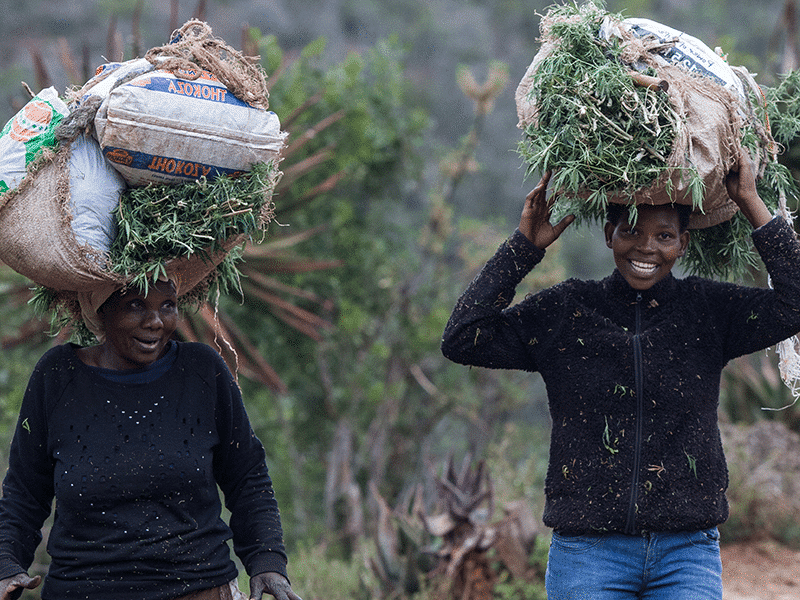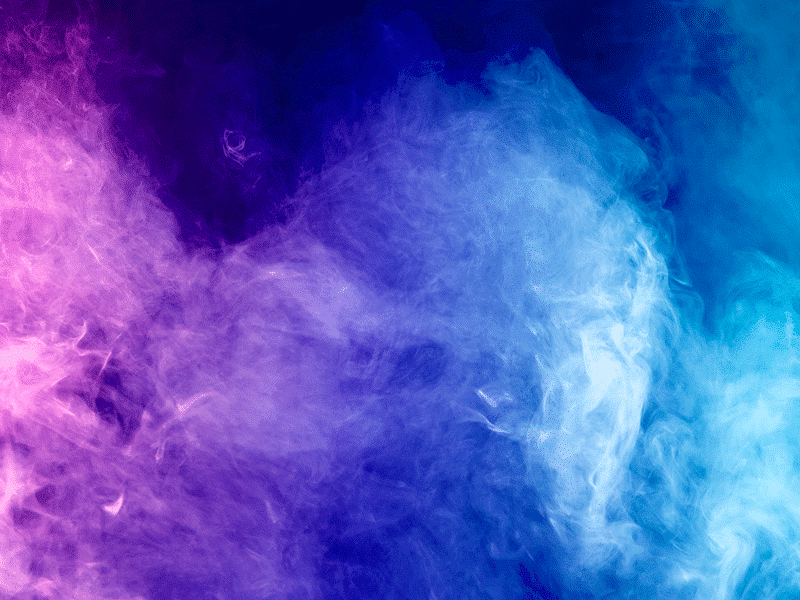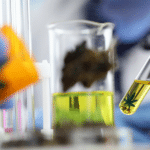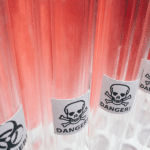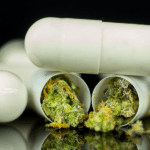There has been a flurry of vague but lurid reportage about a supposedly addicting and debilitating pseudo-cannabis substance that’s circulating in Sierra Leone and other West African countries. This may be akin to illicit products such as K2 and Spice, widely marketed in the US and Europe — but if reports are to be believed, it is far more dangerous.
There is a whiff of sensationalism to the sudden news accounts of a chemically treated herbal substance being used as a street drug, and apparently destroying lives, in Sierra Leone. But, frustratingly, the reports have offered no information about what chemicals are actually in this new illicit product.
Reports have also not explained why it has taken hold in West Africa, of all places, where cannabis is widely available. The crowning insult to weed-lovers around the world is that the stuff is being called “Kush”— appropriating a term associated with high-grade cannabis indica.
The Beeb Goes Yellow?
Surprisingly, the most prominent report on the “Kush” scourge is from the usually serious and rigorous BBC. The BBC News on Feb. 7, 2022, ran a video entitled “Kush: Sierra Leone’s new illegal drug.”
Grainy and pixelated images show supposed addicts literally groveling in filth in an open sewer; frenzied youth gesticulating wildly and self-mutilating; teary-eyed women confessing that they have been reduced to selling sex on the street — all because of “Kush.” Also shown are police in camouflage uniforms carrying out raids on the homes of dealers — and uncovering large plastic bags of unidentified herbaceous substance. We are told: “Medical staff in the capital Freetown say that 90% of the male admissions to the central psychiatric ward are due to Kush use.”
Featured is Sierra Leonean filmmaker Tyson Conteh, who last April did an in-depth report for the BBC on the oppressive conditions faced by sex workers in his country.
“Something bad is happening in my country,” Conteh relates in the new video. “Recently I’ve noticed on social media a lot of very, very young people dying untimely deaths, running mad, harming themselves. I hear these horrors are being caused by a cheap new illegal high called ‘Kush’… Kush has become king, overtaking more expensive street drugs like Tramadol.”
Conteh briefly interviews a young woman who says she sells herself to support her habit — which seems to conflict with the notion that “Kush” is one of the cheaper street drugs available in Freetown. The woman, identified only as Isha, goes from dejection to euphoria after a few puffs off what looks like a joint. Isha speaks wistfully of a friend who died, by strong implication from her Kush habit — but she also says that the friend was abusing alcohol, and “stopped eating.”
The camera moves on to what Conteh calls “desperate young Kush addicts searching through raw sewage, hoping to find something they can sell to survive.” This immediately raises the question of whether Kush is to blame for this desperation — or is endemic poverty the key factor? Conteh does concede some ambiguity about the root cause of the misery: “Smoking Kush is an escape from this life. It’s a vicious circle.”
But there is no ambiguity in the assertion that Kush causes violent behavior. One user admits that “you go into a mad world” and “commit crimes.”
Marshmellow Leaf?
Also interviewed are members of the Sierra Leonean police force’s Transnational Organized Crime Unit or TOCU. An officer, Andrew Ronko, shows confiscated Kush — plastic bags of an herbaceous substance he identifies as “marshmallow leaf.”
He also shows what are identified only as “chemicals,” which “are mixed together to create Kush.” There appears to be no set formula. Kush comes “in several forms,” Ronko explains. “The dynamics are changing when it comes to Kush, you know? So it really is a threat.”
Finally, we are given the story of another desperate user, identified as Tindem. After being exhorted by a public relations officer of the National Drug Law Enforcement Agency at a police-organized community meeting, he sees the error of ways. He vows to quit Kush for the sake of his two young children, as the background music shifts from ominous to uplifting.
At no point is it mentioned that “kush” is actually the traditional name for a potent but innocuous and even (when used with respect) salubrious THC-laden flower.
From Civil War to Gang War
Tyson Conteh did not respond to efforts to contact him through social media. However, Project CBD spoke with Kars de Bruijne, head of the West Africa program at the Netherlands Institute of International Relations (Clingendael), who has served in an advisory capacity to police forces in the region. He acknowledges that concern about Kush is fast growing among regional law enforcement. “Kush is also in Guinea, but it is really big in Sierra Leone,” he says.
In fact, there are suspicions of cross-border trade, as Guinea is emerging as a regional hub in the narco trade — especially, in recent years, for methamphetamine. De Bruijne notes that when Guinea’s border with Mali was closed for several months due to both COVID-19 and political tensions in 2020-21, “there was an explosion of meth in Sierra Leone.” He believes that exports usually sent across the Sahara through Mali were diverted down the coast to Sierra Leone. Claims that drug-traffickers were behind this month’s attempted coup in neighboring Guinea-Bissau also attest to the exploding narco-economy in the region.
De Bruijne, however, takes issue with the notion that Kush makes users violent. “That’s not the case,” he says. “It makes you lazy.” So much so that he believes it is leading to a break-down in discipline among Freetown’s street gangs.
De Bruijne also provides greater clarity about the price of Kush. He agrees that that a minute quantity (enough for a skinny joint, about a gram) goes for 5,000 leones, which is about 50 cents. That’s about the same as a price for “a hit” of other sadly popular street drugs, such as “brown-brown”—which is cocaine or meth cut with gunpowder. This is applied subcutaneously, so users have to actually cause a small wound in the skin with a knife or cigarette.
“Brown-brown” surfaced during Sierra Leone’s brutal 1991-2002 civil war, when it was used as a tool to manipulate child soldiers. Variants are still being sold on the streets, sometimes called “Chicklets” or “Thai white.” The still popular Tramadol, an addictive painkiller, goes for about 18,000 leones a tablet. De Bruijne believes that Kush emerged partially in response to a crackdown on Tramadol.
The culture around such unsavory substances took hold during the war, de Bruijne says, but is still embedded in that of the Freetown street gangs, which are cultivated as proxies by the rival political parties (as was notoriously the case with street gangs in Jamaica in the 1970s). But de Bruijne says that “mobilization of gangs for political ends has become more difficult” thanks to the debilitating effects of Kush.
The very sad irony here is that there is no shortage of actual cannabis in Sierra Leone. “The coastal states of West Africa are a growing source of cannabis,” de Bruijne says. “It’s grown in really large quantities in the mountains around Freetown, mostly for domestic consumption.” Known locally as ganja, jamba or maggi, it is competitively priced compared to the dangerous synthetics — just 500 leones for a small joint’s worth.
Does Anyone Know What It Actually Is?
Trying to figure out what “Kush” actually is entails two questions. First, what herbaceous material is used as the base. And secondly, what are the chemical constituents of the mix it is treated with.
The BBC report mentions marshmallow leaf, while an August 2021 report on a Freetown bust from the local Politico SL makes reference to “mashed mallow plant.” These both presumably refer to Althaea officinalis, commonly known as marshmallow — although it is the root rather than the leaf that is traditionally used for medicinal purposes, and it is indigenous to Europe rather than Africa. It is not intoxicating and not associated with any health hazards.
However, a report that same month on a seemingly different bust from the local news site Awoko identifies the seized plant base as “Indian hemp,” describing it as “dried leaves with a sticky feel and pungent odour.” This rather unambiguously refers to cannabis. It should also be noted that authorities said this shipment, seized at Freetown’s airport, came from the United Kingdom.
The Politico SL report said that the 41 “sachets” of leaf were found at a wharfside warehouse with “3 litres of acetone liquid.” The Awoko report said the seized “Indian hemp” had been treated with “potassium hydroxide.” This was also identified as “synthetic cannabinol”— which it assuredly is not.
Acetone is a widely used solvent and paint remover, which can cause “confusion,” “dizziness” and “fast heart rate” when inhaled in large quantities. Potassium hydroxide is listed by US health and environmental authorities as a hazardous substance that “can cause headache, dizziness, nausea and vomiting.”
De Bruijne says that tea leaves are often used as the base, and that authorities frequently describe the chemical treatment as simply “fertilizer.” He agrees that the stuff, whatever it is, appears to be addictive. However, the varying vegetable base and chemical formula alike inevitably raise the question of whether “Kush” is a discrete substance at all — or just a catchphrase for any herbaceous material treated with any chemical mix.
Synthetics & Semantics
The word Kush originally referred to the Hindu Kush mountain range of Afghanistan, the source of many of the Cannabis indica varietals that were smuggled to Northern California in the 1970s. These were embraced by American back-to-the-land cultivators who created new strains by hybridizing Afghan genetics with the Mexican-origin sativa they were already growing. In stoner slang, “kush” subsequently came to mean potent, indica-heavy hybridized bud.
It is easy to conjecture that West African purveyors of lower quality cannabis appropriated this word for stuff doctored with chemicals in a misguided attempt to boost potency. But now “Kush” has come to mean, within the region, the doctored stuff itself.
In the US and Europe, so-called “synthetic marijuana” (a misleading term favored by news media) has been marketed under names such as “Spice” or “K2.” Synthetic marijuana is invoked to describe virtually any herbaceous material treated with a chemical concoction designed to mimic (however crudely) the effects of THC by supercharging the CB1 cannabinoid receptor in the brain. When these synthetic compounds are banned, manufacturers just tweak a molecule or two to stay ahead of the law.
As previously reported by Project CBD, synthetic cannabinoids were likely a factor in the 2019 outbreak of deaths and pulmonary injuries linked to the consumption of harmful e-cigarettes and cannabis vape pen cartridges.
A few years earlier, there was a spate of reports in New York about “zombielike” effects quite as ghastly (if not as widespread) as those now seen in Freetown. The culprit was identified as a form of “synthetic marijuana” being marketed as “AK-47” or “24 Karat Gold.” Lab tests determined that the chemical in question was a synthetic compound called AMB–FUBINACA, originally developed by Pfizer, the pharmaceutical company. It was said to be 85 times as potent as Delta-9 THC.
The US Drug Enforcement Administration identifies AMB–FUBINACA as a controlled substance; case law in the United States has held that all psychoactive cannabinoids (including Delta-8 THC) are covered by the language in the Controlled Substances Act that specifically references Delta-9. However, some tweaked chemical signatures have strayed far enough from anything akin to THC that they can no longer be considered cannabinoids or cannabinoid analogues — which continues to pose a dilemma for law enforcement. The ambiguity about psychoactive “hemp-derived” cannabinoids since passage of the 2018 US Farm Bill has added to the confusion.
Ghoulish Street Violence
Then there was the 2012 case of a man shot by police in Miami while engaging in rather stomach-churning acts of ghoulish street violence. Sloppy media accounts said he had been under the influence of “a new form of LSD.” But the small print revealed that the substance involved was “bath salts,” which may contain amphetamine-like chemicals such as methylenedioxypyrovalerone (MDPV), mephedrone, and pyrovalerone. Nothing whatsoever to do with lysergic acid diethylamide.
The legal atmosphere in Sierra Leone may be less exacting than in the US, but the ever-morphing nature of the “Kush” formula also raises the question of under what statute each variation may be deemed illegal, as they all apparently are.
The mysterious case of “Kush” indicates that, especially in a traumatized society such as that of Sierra Leone, the lure of dubious and potentially dangerous chemical highs may go deeper than a mere impulse to skirt the law or beat prohibition-induced scarcity with pseudo-cannabis. However, media sensationalism offers little insight, and can even be seen as exploitative — especially when light on specifics.
Finally, it would be a bitter irony if the ill effects of a bad synthetic knock-off ended up contributing to the long-entrenched irrational stigma against cannabis, a safe natural product. Reports should make clear that the West African chemical concoction has appropriated a name already in use for generations, spoken with pride by cultivators and aficionados.
Bill Weinberg, a Project CBD contributing writer, is a 30-year veteran journalist in the fields of drug policy, ecology and indigenous peoples. He is a former news editor at High Times magazine and produces the websites CounterVortex.org and Global Ganja Report. © Copyright, Project CBD. May not be reprinted without permission.
Recommended Readings
What Will the Cannabis Economy Mean for Africa?
A growing number of African countries are hoping that cannabis will be a ticket out of poverty.
Under the Radar: Synthetic Cannabinoids & EVALI
The CDC’s diagnostic criteria for EVALI parallel the symptoms of synthetic cannabinoid use.
The Vaping Crisis: One Year Later
Scientists identify synthetic cannabinoid adulterants in CBD vape oil cartridges, warn of “devastating toxicological consequences.”


